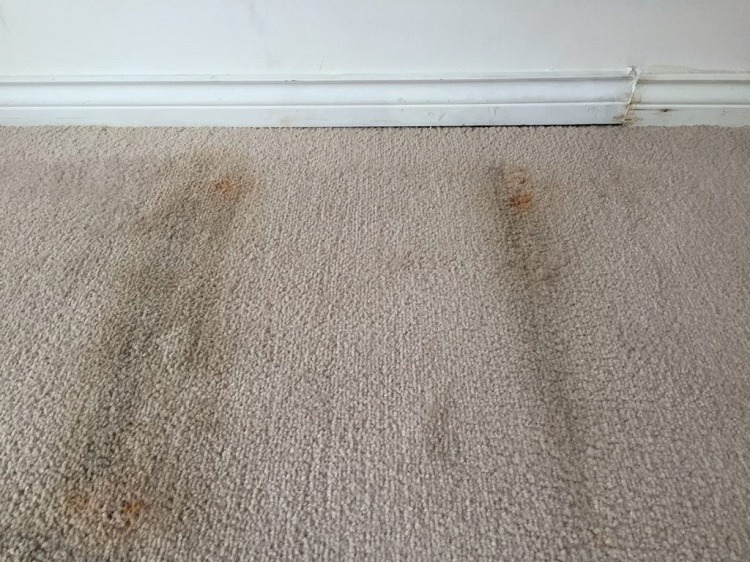When your carpet gets wet from your AC unit, it can be quite a hassle. Water damage can lead to mold growth and unpleasant odors if not handled swiftly. But don’t worry, we’ve got you covered. In this guide, we’ll walk you through the necessary steps to take when your carpet gets wet because of your air conditioning system. Acting quickly is essential to prevent further damage and ensure your living space remains healthy and pleasant. Let’s dive into the details!

Understanding the Cause of the Water Leak
Before addressing the wet carpet, it’s crucial to identify why your AC unit is leaking. Common causes include a clogged drain line, frozen evaporator coil, or a malfunctioning pump. Pinpointing the issue ensures you not only fix the wet carpet but also prevent future leaks. Consider consulting a professional HVAC technician to diagnose and repair the root cause of the water leak.
Inspecting the AC Unit
Begin by inspecting the AC unit and its surroundings. Check for any visible signs of water leakage and accumulation. Ensure the unit is level, as an uneven surface can lead to improper drainage, causing water to spill onto your carpet.
Check the Drain Line
The drain line is a common culprit for AC leaks. It can become clogged with debris, leading to water backup. Use a wet/dry vacuum or a plumber’s snake to clear any blockages. Regular maintenance of the drain line is crucial to prevent future leaks. For more on preventing mold in carpets, visit nachi.org.
Immediate Steps to Take When the Carpet Gets Wet
Once you’ve identified and addressed the source of the leak, it’s time to focus on drying the carpet. Acting quickly is key to preventing mold growth and minimizing damage.
Remove Furniture and Items
Start by removing any furniture or items from the affected area. This will not only prevent further damage to your belongings but also allow for more efficient drying of the carpet.
Blot Excess Water
Use clean towels or a wet/dry vacuum to blot and absorb as much water as possible from the carpet. Avoid rubbing, as this can damage the carpet fibers. Continue until no more water can be extracted.
Use Fans and Dehumidifiers
Set up fans and dehumidifiers to facilitate the drying process. Position fans to blow air across the wet area, and use dehumidifiers to remove moisture from the air. This will help speed up evaporation and prevent mold growth.
Thoroughly Drying the Carpet
Proper drying is essential to ensure your carpet is free from moisture and potential mold. Here’s how to do it effectively:
Lift the Carpet
If possible, lift the carpet to expose the padding and subfloor. This allows air to circulate beneath, promoting thorough drying. If the padding is saturated, replacing it may be necessary to prevent mold.
Check for Mold
While the carpet is lifted, inspect the padding and subfloor for any signs of mold. Mold appears as discoloration and may have a musty odor. If you notice mold, it’s crucial to address it immediately to prevent further spread. For safe mold removal techniques, check out remove mold safely.
Preventing Future Water Damage
Once the carpet is dry and the AC unit is repaired, take steps to prevent future water damage. Regular maintenance and vigilance can save you from dealing with similar issues again.
Regular AC Maintenance
Schedule regular maintenance for your AC unit to ensure it’s functioning optimally. This includes cleaning or replacing filters, inspecting the drain line, and checking for any signs of wear and tear.
Monitor Humidity Levels
High humidity can exacerbate AC issues and contribute to mold growth. Use a hygrometer to monitor indoor humidity levels and keep them between 30-50%. For more details, visit humidity levels.
Conclusion
Dealing with a wet carpet due to an AC leak can be challenging, but with prompt action and the right steps, you can mitigate the damage. Remember to identify the source of the leak, dry the carpet thoroughly, and take preventive measures to avoid future issues. By doing so, you’ll ensure a healthy and comfortable living environment.

FAQs
Is it necessary to replace carpet padding after it gets wet?
It depends on the extent of the water damage. If the padding is heavily saturated and shows signs of mold, replacing it is advisable. For more information, check padding replacement.
How long does it take to dry a wet carpet?
Drying time varies based on factors like humidity, carpet thickness, and ventilation. With fans and dehumidifiers, it can take 24-48 hours. Learn more about drying methods at drying carpet.
Can a wet carpet cause health issues?
Yes, if not dried properly, a wet carpet can lead to mold growth, which may cause respiratory problems and allergies. It’s crucial to address wet carpets promptly to maintain a healthy indoor environment.
This article contains affiliate links. We may earn a commission at no extra cost to you.


